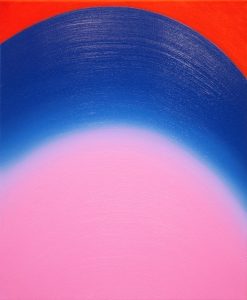Gallery Talk by Osamu Kobayashi – May 28
May 22, 2017Sunday, May 28, 2017 at 2:00 pm
Admission: Free
701 CCA
701 Whaley St., second floor
Columbia, SC 29201
701 Center for Contemporary Art in Columbia, S.C., presents Brooklyn, N.Y., painter and Columbia, S.C., native Osamu Kobayashi’s latest work in the solo exhibition Mound. The opening reception is Thursday, May 18, 7:00 – 9:00 p.m., and the exhibition will run through Sunday, July 2. The gallery talk is Sunday, May 28, 2:00 p.m.
From January – April this year, Kobayashi (b. 1984) experienced a homecoming of sorts as artist-in-residence at 701 CCA for three months. During that period, he created a new body of work for the exhibition. The work includes both small and extremely large paintings, the largest paintings Kobayashi has created to date.
About the exhibition, Mound, Kobayashi says: “The mound motif has come and gone from my work since college. This is the first time I’ve focused exclusively on it. In some of the works, the mound becomes the central element, in others, it takes a backseat. I was originally drawn to the form for its energy and simplicity. Diagonals coming together create movement and a perception of depth. Even with a flat color, the bottom of the shape feels close, while the top pushes back into space. The pinnacle becomes spiritual; a place of reverence. I enjoy that beauty but also enjoy subverting it.”
Kobayashi attended Springdale Elementary, Fulmer Middle School and Airport High in Columbia, where his parents own Camon Japanese Restaurant & Sushi Bar on Assembly Street. For his junior year in high school, he moved to the Governor’s School for the Arts in Greenville, S.C. In 2006, he received his BFA at the Maryland Institute College of Art in Baltimore, Md., one of the country’s most prestigious art schools. After moving the Brooklyn, N.Y., Kobayashi began to make a name for himself as a non-objective painter.
The 701 CCA residency made Kobayashi realize several things. “Something I did not fully expect was the importance of uninterrupted time,” he says. “I didn’t realize how distracted I had become until I came here. For my practice, the physical act of putting paint to canvas is a fraction of the time spent working on a piece. Much of painting involves just thinking about what to paint, or how to manipulate a painting to make it better. What is not seen is the bulk of my work.
For further inquiries, contact [email protected] or call Wim Roefs at (803) 238-2351.














